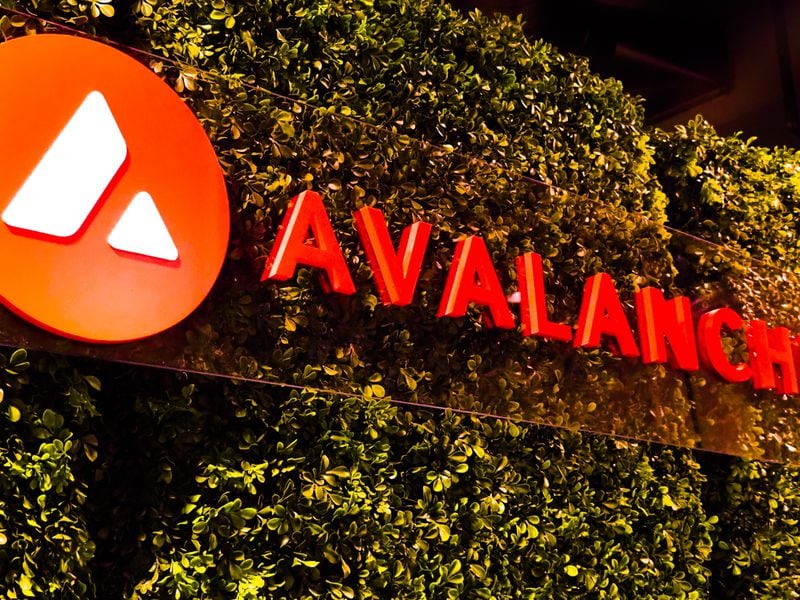Better Broadband Will Pave the Way for a ‘Brand New World’
Better Broadband Will Pave the Way for a ‘Brand New World’
Bandwidth will be the defining factor of modern life and social evolution going forward. With increased access to the internet as well as ever-advanced computing, it’s likely the tone and tenor of human existence will change forever.
Augmented reality (AR), virtual reality (VR) and the ubiquity of cryptocurrencies will become fixtures of life a decade from now, but will only become popularized once the internet is everywhere, running at speeds we can hardly imagine.
This story is less about the possibility of downloading a feature length film in less than a second than the emergence of trillions of interconnected devices and people, making the web ever present. The year is 2030, and everything has changed.
James Altucher is an entrepreneur, angel investor, standup comedian and prolific author. This post is part of CoinDesk’s “Internet 2030” series about the future of the crypto economy.
We’re upping a “G” (as in 4G, or fourth-generation broadband technology) almost every two years and expanding bandwidth at an exponential rate. With “10G” on our phones, we’ll look back at 2020 and laugh about how slow the internet was and how Zoom calls were of such low quality.
With 100GB/ps we’ll be able to not only work remotely, but work remotely in the same office. I can “VR-port” into work, go into my office, see my co-workers, go to meetings, all without leaving my home. Haptic sensors will not only make me feel everything I touch in Microsoft VROffice Suite but also massage my muscles so they don’t atrophy, in case I work overtime.
We may become nostalgic for the days when it wasn’t so easy to go into a complete virtual reality – composed of millions of pixels every centimeter – that will feel as real as any other reality once you’re transposed. Where is the solid ground?, you may ask yourself.
With broadband connection so advanced it’s hard to imagine it not becoming a natural right, as important a commodity as air itself, opposed to something you have to “sign up” for.
In a world where bandwidth and storage are 100% commoditized, everything will change. Here are the knock-on effects I predict will follow.
Augmented reality
Consider the scenario of my wife, Robyn, and me taking a walk, where we pass an Amazon 3D printing store. With augmented reality, she might see a coupon for bras while I see a coupon for some marijuana.
Augmented reality will exist seamlessly side by side with regular reality. Our worlds will be reshaped to meet our personalities, experiences and mood.
With convenience comes costs.
We’ll walk by a restaurant and she’ll see, about 12 inches in front of her eyes, the vegan menu and I’ll see the paleo menu. A neighbor may pass and – if his settings are set for “Everyone” – we’ll see a floating image of the last movie he saw or recent photos from his latest vacation.
Or a listing of his political beliefs on display for all to see in case you want to have (or avoid) a conversation with him.
Crypto
When COVID-19 ended, everyone abandoned the expensive cities for safety, quality of life and financial reasons. And because bandwidth only increased while Zoom got easier to use, there was no more need for office buildings to be full. People could live anywhere and work in the 2D virtual office or in Microsoft VROffice.
With fewer people and companies, city tax revenues plunged just when deficits were spiking. Mayors in each city had to fire teachers, garbage collectors and police. Crime spiked, garbage was everywhere and fewer tourists wanted to enter the metropolis.
To combat these countervailing forces, some cities created a local cryptocurrency to provide incentives to stay and shop locally. New York City, for instance, created NYCBucks. Everybody in the city got a steady universal basic income (UBI) of NYCBucks, and everyone who visited NYC as a tourist got an allocation based on how many days they would be in the city.
You could only spend your NYCBucks in NYC. For every transaction both the buyer and the seller mined micro NYCBucks pro rata with the size of your transaction.
Tourism began to come back to cities. And businesses returned and required more employees to be local. Cities, for the moment, were saved.
The same method was applied at the federal level, with the U.S. unveiling USBucks shortly after.
Auto ecommerce
The widespread deployment of cryptocurrencies and wallets made it possible to financialize even the most mundane aspects of modern existence.
The smart refrigerator will read when you are running low on milk, complete a blockchain transaction with the wallet at the grocery store and a drone will make a milk delivery directly to the house. The more transactions the refrigerator does, the more USBucks are mined.
But it’s not just kitchen gadgets. Everything that can be chipped will be. This is a trend that has come to be known as acommerce, short for auto-ecommerce. The economy will thrive on these microtransactions. In other words, people will spend what they make.
Data storage
With convenience comes costs.
Because of VR and enormous blockchain demands following crypto’s mass adoption, cloud storage demands will be 1,000 times what they are currently. The biggest companies in the world – Amazon, Google, Dropbox, Apple – will only grow larger to meet and upkeep growing amounts of cloud storage data. Every day of 2030 will add up to more information and data created than the entirety of the human race from 2020-2025.
DNA computing
These monolithic companies, bolstered by growing profits, will make advances in DNA computing, an experimental form that seeks to bring the human body and machines closer together.
These new machines will be powerful enough to solve NP problems (“nondeterministic polynomial time” – or incredibly complex computer problems) meaning that today’s public key cryptography can be decoded.
For a time, Bitcoin, Ethereum and all public chains became essentially worthless. However, although quantum computing never worked out (the scientists realized that just the observation of a result could make it wrong), quantum cryptography was solved, thereby ensuring the safety of crypto and making it more resilient.
Genomics and gamifying enlightenment
In 2020, genomics is in a state of 2D hibernation. Yes, the genome was sequenced and diseases based on single-gene mutations (e.g. Tay-Sachs) are regularly cured with CRISPR technologies, diseases based on multi-gene mutations are still impossible to compute.
DNA Computing will be suited to solve the problem, and able to discover the gene pairs that mutated for all cancers, heart disease, strokes and Alzheimer’s. And then, later, IQ, emotional intelligence, athletic ability and charisma will be figured out.
The Chinese government will quickly use 3D Genomics to create a country of super intelligent babies. Nobody knows what the final result will be.
Though in the west, daily life will also increasingly be brought under the yoke of technology companies and the state. Depending on your DNA and other factors, the ideal number of steps, hours of sleep, hours of reading, Vitamin D, calories consumed and water drank will be counted each day. There will be no “biological privacy.”
It will be agreed that competition breeds the best results, so the health statistics of everyone in the country will be made public and ranked. Dating apps will be set up to match those with similar health. The healthiest, and most mentally fit, will receive direct payments of USBucks.
Will it be a better world? I have no idea. Time will tell.








